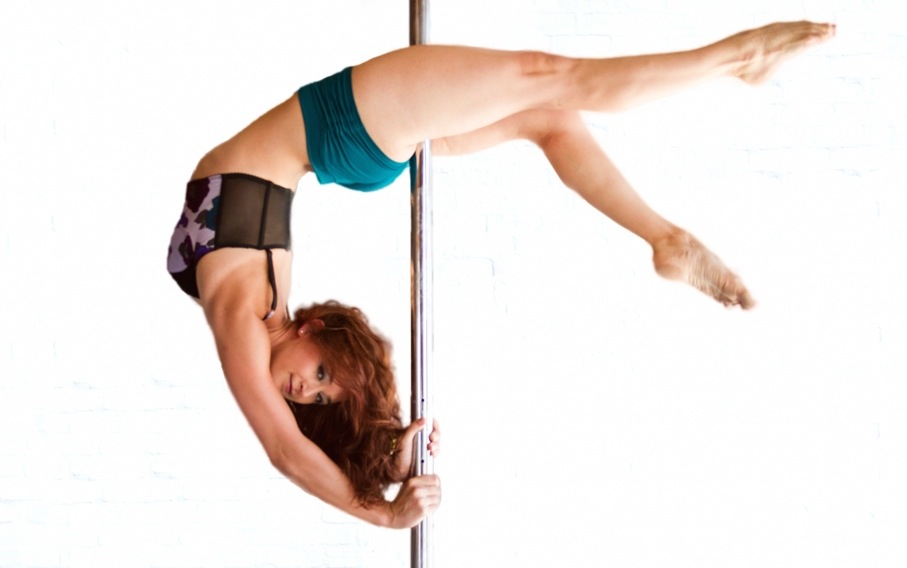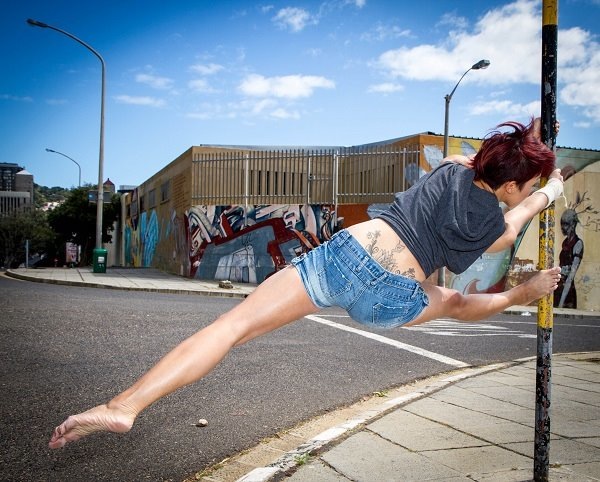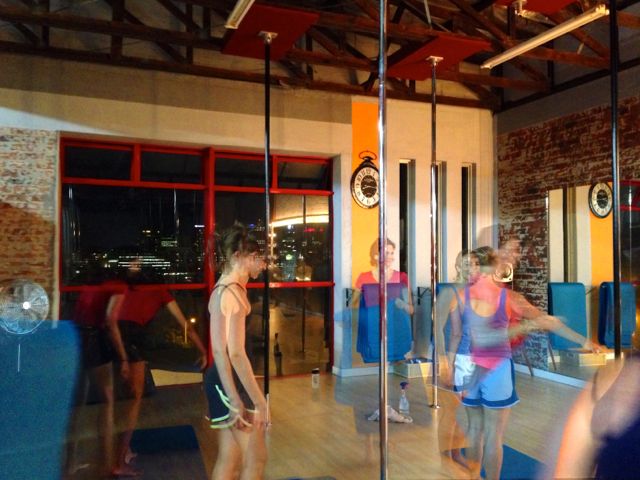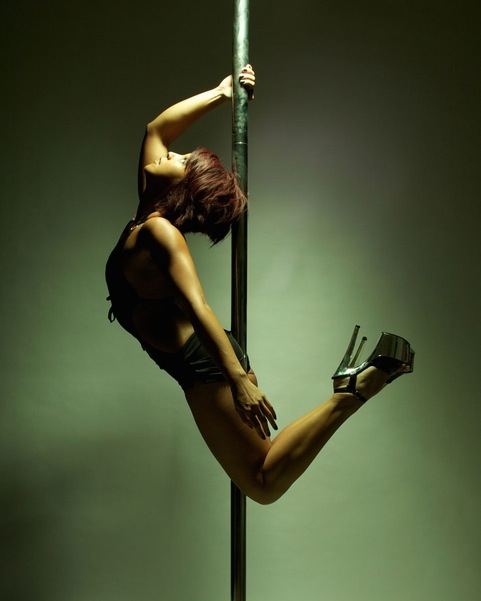Pole-dancing for beginners
“Pole-dancing?”, my barefoot husband raised his eyebrows at me. “Really?” he asked, “it just makes me laugh! So odd….”. Ah well, can’t please everyone.
It sounds really out-there, I know, but what I discovered doing a trial class a few weeks ago in a stunning new industrial pole-dancing studio called “The Pole Project”, is that it’s damn hard work to look that odd! And when you watch the teachers and the advanced classes, it really doesn’t look odd to me at all – it’s just very impressive.
“It should actually be called pole-gymnastics”, our intro teacher told us while hanging upside down on the pole in the splits, “but maybe that would turn more people off.” No pun intended, I’m sure.
Of course, when you’re a total beginner, you need to learn the very basics. And I kind of liked the basics, they seemed a good starting point for rather more things than just pole-dancing….
1. Hold on properly, but loosen your grip.
The first thing you learn is how to hold the pole. No, I’m not kidding! It makes all the difference, really. If you’re going to be hauling yourself up and down and round & round the pole, best you know how to hold on! It’s all about technique, like most arts. You need to learn the technique that makes it all look effortless. If everyone is staring at your strangle-hold on the pole, they’ll miss how impressive you are! You need to learn the right way to place your hands, and how they complement each other, but you also need to learn – with time – how to loosen your grip. In the beginning you literally hang on for dear life – it’s a long way to the floor you know! But if you’re hanging on too tight, you just can’t spin. Or dance. You need to learn to trust the pole, rely on technique and let go enough to actually enjoy it.
2. Check the pole
There is one non-negotiable in pole-dancing: the pole must be stable. So it’s a good idea to make sure you’ve checked the base and you know you’re starting off well. You can’t stop when you’re half way up the pole & mid-spin, to fix the pole. It’s kind of a deal breaker. The base must be stable. It doesn’t need frills or decoration even, but it must be solid and able to withstand all the variables of pressure that grow the higher up the pole you get. You can’t get anywhere with a wobbly pole.
3. A lot of the work happens on the ground.
Some of the exercises you learn first are called “conditioning exercises”. These are small, not very impressive moves like using your (correct) grip and upper body strength to lift yourself just off the ground. Not impressive at all …until you try it and realise how much work you have to do before you’ll be able to pull yourself up that pole and drop upside down! And if you can’t do the splits on the ground, you’re not miraculously going to be able to do them when you’re hanging off the pole. But you’re certainly never going to get there if you don’t start with the conditioning. On the ground, but always with your eye on the pole!

4. Know what’s possible.
As much as you have to start small, do the hard work on the floor, and learn the basics, you also need to know what’s possible. It’s pretty cool to watch the pro’s wow with their acrobatics and elegant pole-sitting and easy fire-mans spins, but it’s also important to know that it’s possible you can get there. So when, in your first ever pole class the instructor says “Oh, you’ll learn to go upside down int his first course”, it’s a little terrifying but also exhilarating! If that’s possible in the first 8 weeks, then I can do pretty much anything!
5. Sometimes you have to diva!
For some of us (introverts), being in the spot-light is not on our lists very often. And there are lots of different ways of being successful and making your mark, but sometimes it’s worth stepping out of that comfort zone and freaking yourself out a little! Sometimes, if you’re like me, you have to dig deep and find a little diva to work with for a few minutes. You might not love it, but you certainly will learn from it and the more you know about yourself, the better.
The trick, I think, is getting over yourself for long enough to do something new – even if it raises eyebrows and makes people do a double-take. In fact, maybe it’s about trying stuff especially because it will get those reactions – if other people are not surprised, then you haven’t pushed your own boundaries far enough.
And no one ever did great things staying inside other people’s expectations.
———————————————————————————————————————-
For more info on the fabulous Pole Project, check out their website or Facebook page and give it a try!
Photos by me (in the studio) or with kind permission from the Pole Project.






March 2nd, 2014 at 7:21 am
I can’t wait to see your new killa heels!!
March 2nd, 2014 at 1:59 pm
Haha, Karen, not sure I’ll ever get there! 🙂